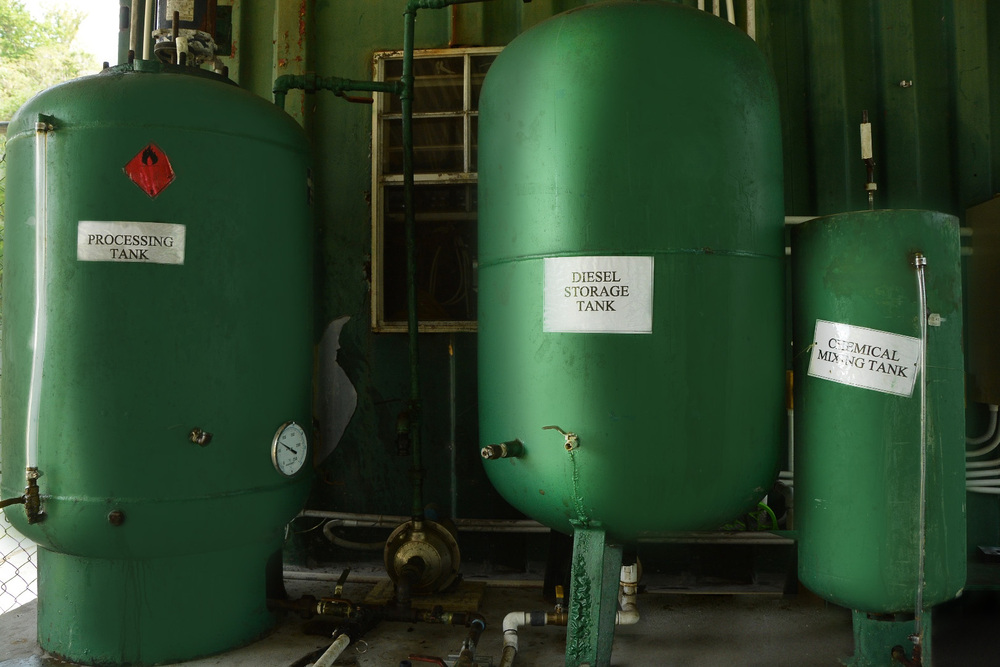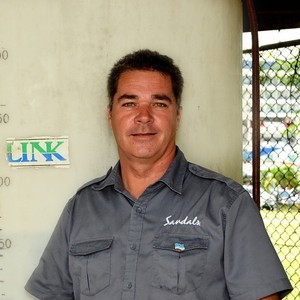Sandals explores expanding biodiesel project beyond St. Lucia



Photo: Sandals Resorts International
February 18, 2020
BY Sandals Resorts International
Following the success of its first Biodiesel Conversion Centre in St. Lucia, Sandals Resorts International is exploring ways to expand the project throughout its resorts across the region.
For the past five years, the company’s Dive Centre at Pointe Seraphine has been the site of its first biodiesel plant, successfully converting used vegetable oil from the kitchens at the company’s three resorts on the island into biodiesel fuel for use in marine vessels. Initiated as a pilot project in keeping with the company’s commitment to sustainable environmental practices, the project first started in 2015 by Maurice Moss, former marine boat maintenance manager at the Dive Center, who built the first conversion processor from “bits and pieces” he collected from all three resorts.
Since July 2018, however, the plant, which has since been upgraded, has been managed by Quentin Landman, who currently holds Moss’ former post while the actual fuel conversion is handled by the company’s biodiesel technician, Sammy Hillman.
Biodiesel is a clean burning alternative to petroleum diesel and is derived from new or waste vegetable oil. It is made by reacting fatty acids with a base in the presence of an alcohol, typically methanol, and a catalyst. The two most common bases are sodium hydroxide (NAOH) or potassium hydroxide (KOH).
According to the U.S. DOE and the USDA, using biodiesel in place of petroleum diesel will reduce the emission of total unburned hydrocarbons by 60 percent, carbon monoxide by 48 percent, and particulate matter by 47 percent and will see a 100 percent reduction in sulphates. Research has also shown that biodiesel is the first fuel to have fully completed the health effects testing of the U.S. Clean Air Act with results revealing that biodiesel poses no health threats and reduces the compounds linked to cancer by 80 to 90 percent.
Advertisement
Advertisement
According to Landman, the plant produces approximately 320 gallons of biodiesel per month, and this is used to fuel the company’s four 16-ton dive boats as well as his own company-issued van. “We manufacture about 80 gallons over six days and our engines drink diesel at rates of 25 gallons an hour,” Landman said. “What we save at the pump is about 90 cents per liter of diesel. We do get worthwhile savings.”
Landman explained that the use of biodiesel saves the company approximately XCD$1361.26 per month in fuel costs, which translates to XCD$16,335.12 a year. “Using the biodiesel fuel cuts our monthly diesel budget by 10 percent,” he said. “For a small project, those are commendable results.”
Although the company’s vessels are not fully run on biodiesel fuel and are instead powered by a mix of biodiesel and petroleum diesel, Landman says that the environmental benefits and the savings are no less remarkable.
“We add about 35 to 45 percent biodiesel to the vessels’ diesel and we do this because there are settings in the vehicles’ engine control unit that would need to be changed to allow them to run entirely on biodiesel, and we’ve not done that yet,” Landman said. “We’ve found that a mix is best, and I’ve used it in my own vehicle with no ill effects.” Landman added that mixing biodiesel and petroleum diesel maintains similar horsepower and fuel economy.
Advertisement
Advertisement
To create biodiesel, waste vegetable oil from the resorts’ kitchens is taken to the Dive Centre where it is strained to remove food remnants. From there, the oil is left to settle for several days before the clean surface oil is pumped into storage containers. The oil is thereafter pumped into a processor and heated to remove excess water. An acidity test or titration is done to determine the free fatty acid content as a measure of the quantities of chemicals needed to initiate the conversion process. The reaction of the base and the methanol produces methoxide, which is slowly introduced into the oil and mixed for several hours. The product of the reaction is then transferred to a settling tank where chemical separation takes place and the biodiesel is formed. The newly formed biodiesel is further transferred to wash tanks or “dry wash” columns where it goes through a series of “washes” to remove residual chemicals. From there, the biodiesel is dried by heating and circulation to extract excess water and then pumped through a filter for immediate use or for storage.
Landman also revealed that residual product from the conversion process, also known as glycerol, is beneficial and when subjected to one more chemical process can be transformed into liquid soap for use in the kitchen or to wash marine vessels.
Adam Stewart, Sandals Resorts International’s deputy chairman expressed pride at the accomplishments of the team.
“The work that this team has been doing is nothing short of remarkable,” Stewart said. “It not only speaks to our commitment to the environment and to reducing our carbon footprint, but it also highlights the talent and expertise of our team members who have committed to this project and have reaped commendable results. All the work is being done in-house by our team and that alone is incredibly significant.”
Stewart added that additional research and testing would continue in St. Lucia with a view to replicating the work of the Conversion Centre on all islands where Sandals and Beaches operate.
Related Stories
U.S. fuel ethanol capacity fell slightly in April, while biodiesel and renewable diesel capacity held steady, according to data released by the U.S. EIA on June 30. Feedstock consumption was down when compared to the previous month.
The U.S. EPA on July 8 hosted virtual public hearing to gather input on the agency’s recently released proposed rule to set 2026 and 2027 RFS RVOs. Members of the biofuel industry were among those to offer testimony during the event.
The USDA’s Risk Management Agency is implementing multiple changes to the Camelina pilot insurance program for the 2026 and succeeding crop years. The changes will expand coverage options and provide greater flexibility for producers.
The USDA’s National Agricultural Statistics Service on June 30 released its annual Acreage report, estimating that 83.4 million acres of soybeans have been planted in the U.S. this year, down 4% when compared to 2024.
SAF Magazine and the Commercial Aviation Alternative Fuels Initiative announced the preliminary agenda for the North American SAF Conference and Expo, being held Sept. 22-24 at the Minneapolis Convention Center in Minneapolis, Minnesota.
Upcoming Events










